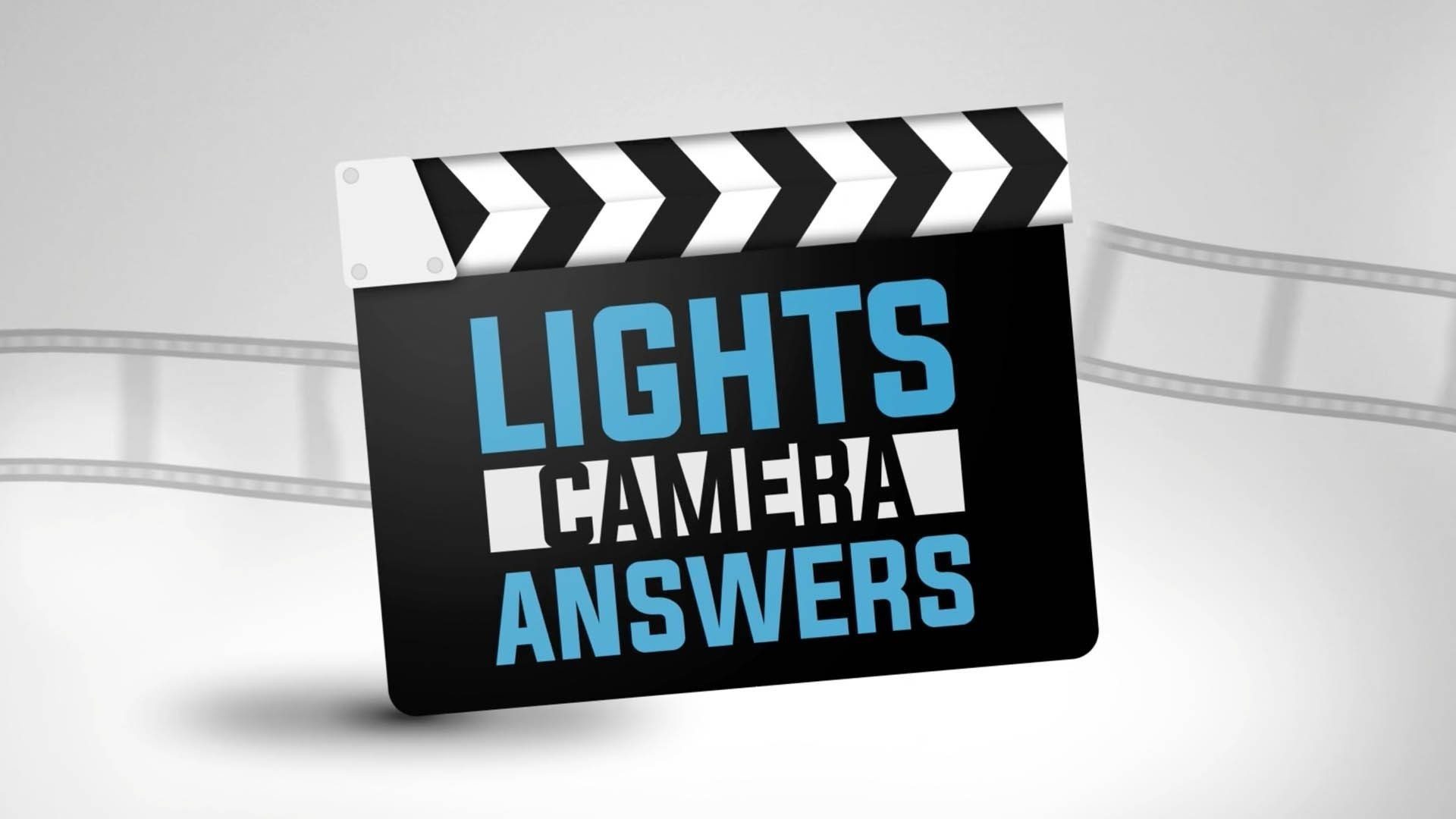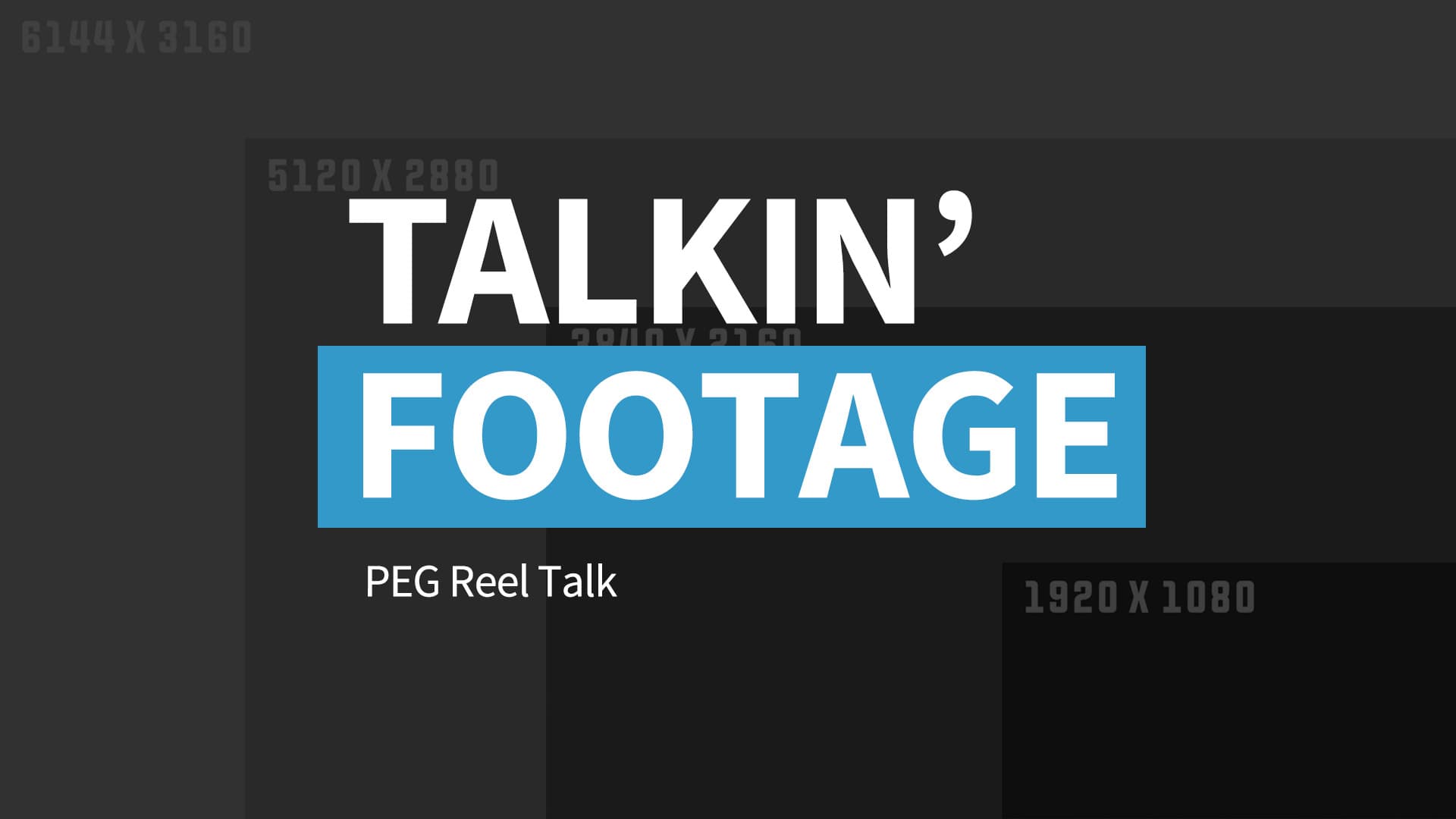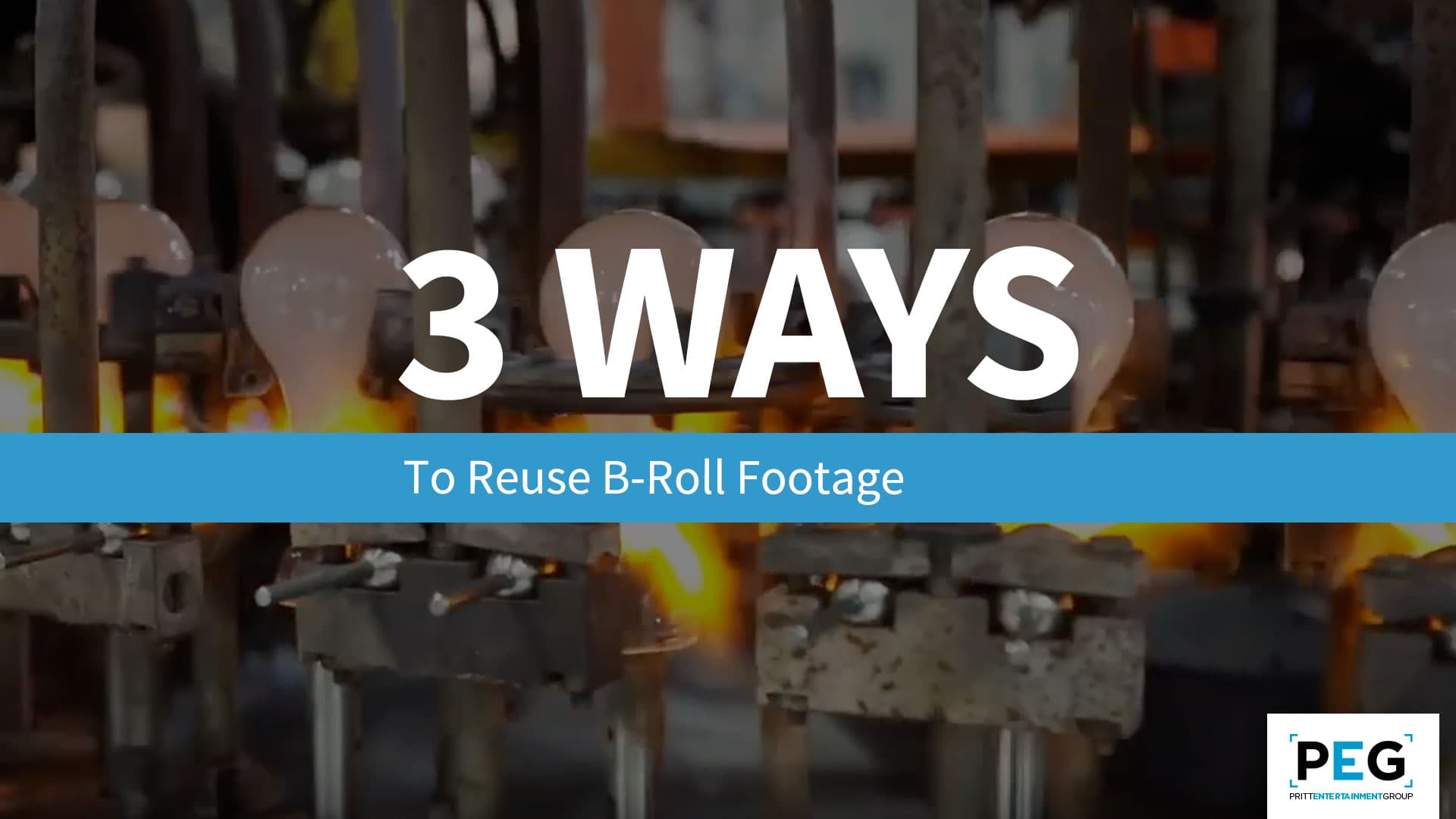Talkin' Color Correction
Contrast, saturation, white balance and more. On this PEG Reel Talk, our team is taking you through how we color correct footage to get a neutral grade - the perfect starting point for adding in personal style or a more specific look to your video project.
Video Transcript
Hey everyone, and welcome to another episode of PEG Reel Talk. My name is Josh Kuss and I'm the Production Manager here at PEG. Today, we're talking all about color correction.
So, we've gone out we've captured all your footage and it's time to take a look at it in program, but it might not look the way you'd expect depending on the codec and the color space we chose. It could look a little strange. There are a few main color spaces that we use at PEG and I think the most important one to start with is the log color space. The log color space is extremely useful for editors like us because it helps maintain detail in the brightest and the darkest parts of an image by compressing the waveform down to something like this. If we look at the waveform from a non-log clip we can see that it's not compressed it's very, very spread out and there are things that are definitely touching the zero line and the 100 line, meaning there may be data up here that's being clipped. So, when something is clipped in an image like this that generally means in the high end it's going to be something that's pure white and it's not going to have any detail left so there might be clouds here this sky may have actually been a little bit more blue to the human eye but the camera can't actually pick that up because it's so, so bright that that data has just completely clipped. That can happen in the shadows as well and that data will just be pure black and you won't be able to see, like in this area of the image for instance you won't be able to see the detail of the branches and things like that if it's way too dark. But if you have a camera with a high enough dynamic range and you're filming in log you actually have the opportunity to save some of that information because it compresses the waveform down and pulls something that may have been up here down to something more reasonable and actually can show you, you know, those clouds in the sky or if you're down here and you're pulling it up you can see the detail of those branches and those leaves. You just have to actually do a little bit of correction to save them. It's worth noting that shooting in the log color space requires the most work in post. So that actually kind of makes it the best example for talking about color correction.
Before I jump into actually correcting this footage, I do want to note that color is completely subjective and if you want your piece to look a certain way, then make it look that way! It doesn't need to look correct to the human eye. Whatever you feel like you want it to look like, go for it. Color correction is meant to kind of be out there and it's fluid and you can do what you want with it. And hopefully it'll help you drive the emotion of your piece a certain direction.
Something you often see is a you know a very warm feel or very cool feel. The cold feels are always for something a little bit more sad, the warm feels might be for something that's meant to drive a happy feel. So color can do a lot of things and nothing is 100 correct by any means.
This is just getting to a neutral grade which is what we do at PEG before we start to stylize the footage. So we'll get it to something that looks close to correct, and then we may take it from there and say "okay, I kind of want to cool this down a little bit." Whatever we'd like to do. The only important note I have for that is if you're doing something make sure you do it throughout the whole piece, or if there's a big shift in transition just make sure it's all cohesive and that it feels good in the end and then it'll be good to go.
So to start us off you can see again I really want to note that the waveform is compressed that's the most important thing to consider when you're talking log footage, especially because if you're looking to correct log footage you want to correct this compression. So to decompress this waveform we'll actually use the contrast slider. So over here I will take and add some contrast to the image and when I do that, if you watch the waveform and then the image, you'll see that the waveform's spreading out the image is actually starting to look a little bit more correct. We're getting a little bit more saturation. So let's watch as it comes up and you can see the waveform spreading down and you can see the image getting a little bit more saturated. A little bit closer to what it's supposed to look like.
Now you can tell this is something a little bit dark this is actually in our old basement at PEG and we just threw a quick light up this was just testing our brand new A7, so it wasn't like a super elaborate setup. You can tell the lighting's not necessarily in the right place things like that. We were just having fun with this one, but you can see it's already starting to look more correct just by adding that contrast. Now if we were outside this waveform would definitely be closer to the top here, but because we're in a dark basement you can see we're kind of shying towards the darker parts of the waveform. But again just by adding contrast to log footage you can get it looking closer to like a pre-graded look. So let's add even more contrast I like to go up as high as I can and then see how it looks. It's generally looking pretty good actually, you know, nothing is clipping in the lows maybe just this little area here you can see which might just be this shadow in my shirt. but yeah.
I mean it's starting to look really good already. And then there's a few other minor adjustments that can be made to make it look even better. One of those I like to do is I like to take the darker parts of the image which we control with these two sliders, the black slider and the shadow slider, I like to take those and just bring them down a little bit to where they're touching the zero line. So let's do that super quick. I use the waveform in nearly everything I do color correction wise. I'm always checking it. It's a really important tool and especially with log footage it helps you kind of visualize what's happening. So right there I'd say we're definitely touching the line so that's good to me. And then you can also see what shadows does. So the blacks adjustment I just made is really for this bottom part of the waveform. The shadows is going to do the bottom up to about 25 of your darkest parts of the image, so you're really adjusting not just the black things in the image but some of the darker things so let's bring that down a little bit. And anytime you make these kind of adjustments where you're lowering the darker part of the image you're actually still even adding a little bit more contrast. So I love contrast. I use it in nearly everything, but there are pieces that you'll see that are fully-produced with low contrast or lower contrast and you can tell that just by a hazy look.
So let's let's bump this down a little bit and you see this kind of haze it feels like that's over me and over the entire image that actually kind of denotes low contrast stuff and it's a very popular style. I'm going to leave mine like this just again because I'd like it to be a neutral grade, but just trying to show that there are a lot of different ways to do color correction. So nothing's 100 correct.
Okay, I've got my blacks touching the bottom line here which is what I really like and then I adjusted my shadows to really even drive a little bit more contrast. The next thing I would do is adjust for skin tone so I would just make sure that the skin tone is at least close to exposed correctly. Again, the lighting in this shot's not 100 perfect, but to do that what I would do is I would go to the effect controls and I would actually just make a quick mask on the bright side of my face, because this is what we were obviously trying to shoot our exposure. For now you can see it kind of just cut that little chunk of my cheek out and that's all we have left in the image. So what that does is it shows only that and the waveform and you can see that we're kind of peaking here right around 60. The human skin tone you want to be around 65. So I'm just going to boost this slightly with the exposure slider. So the exposure slider is exactly that and it just adjusts the exposure of the shot. So I'm just going to bump this up until I feel like it's right around 65. That's pretty close. Again, this is pretty subjective. Let's take a look at it and see if we like how bright it is. So to do that I'm just going to turn off of my mask, and yeah, that's not bad. It's not too bright it's definitely, you know, feeling a little better across the board and my skin tone feels a little bit more accurate. So, before I'd say we were a little under, now we're definitely closer.
Another really common adjustment when you're talking color correction is the white balance. We shot this in a pretty controlled environment so the white balance in this shot's already pretty well close to accurate. But every color corrector will have some kind of selection for a white object in the frame and what you're telling the camera or what you're telling, I guess, the footage at this point is this is what is supposed to be 100% white. So we have this little ethernet dongle that was hanging behind me so that is a white object in the frame. So I'm just going to use that. I'll select it here and you can see like I said we were pretty close to accurate we're only a little tiny bit off and even that we could get by without it. It's not that big of an adjustment, but sometimes if you know you filmed it incorrectly, this little part of color correction can really make a big difference in making your shot look correct.
The last slider I really want to talk about before I jump into talking about the other color spaces is the saturation slider. It's also very important. I'm just going to kind of adjust it and show you guys what it does it will just increase or decrease the amount of color in a scene. And there's actually another very useful scope that you can use to see this that's the vector scope. And let's turn off our waveform and you can see this is the actual saturation of the image. So as I adjust this you can see that's kind of expanding and contracting so this is what you can use to kind of say "I want this to be a little bit more poppy," "I want it to have a lot more color." So you can just adjust this slider as you want. Some people go way overboard and it makes it feel really like pastel. I tend to stay between you know 100 and 110, but I do think that looks really nice so I think we've pretty well gotten this to a neutral grade. Let's turn off our effect and see how it looked to start and then let's turn it back on and you can see that's just a huge difference and it actually does look close to correct to the human eye. So I would say this is good and, then, from there I'd start to stylize it.
Now that we've kind of seen what it takes to correct log footage. I want to mention a couple other color spaces that we film in that can be super handy if done correctly. One that can give you even more creative power with color and the same dynamic range as log, and then another that actually just really speeds up the post-production process if you do it right.
The first one is RAW footage. We talked a lot about it in the previous episode all about footage in general, but to summarize it's just insanely powerful. It has way more dynamic range than even our highest quality log footage and it allows you to adjust way more in-depth settings with their own RAW color workflows. The second color space is pre-graded footage. This is kind of like the drone clip I showed earlier it's basically any color profile in your camera besides log or RAW and that will basically make it look close to correct to the human eye. It'll look ready to use right out of the gate with some very important caveats. First, you need to be certain that your exposure is correct when you film it or you might get some of that clipped data that we talked about which won't let us save any of the details in the highlights or the shadows. I can't say it enough if you clip that data it cannot be recovered. I know I'm harping on it a lot, but it's one of the most noticeable things in a shot when the sky or a window is just super super blown out and it's bright white. The second thing you definitely need to watch out for when you're filming pre-graded is the white balance. It can still be corrected, but it's not as easy as RAW footage and it's a little bit more destructive. So I recommend making sure it's accurate when you're filming if you're going the pre-graded route. And, lastly, the quality of the camera matters a ton when you're filming pre-graded. Trying to color correct outdoor footage from like an Iphone would give you way more trouble than correcting the same scene shot on FS7, because the compression and the dynamic range differences between the two cameras is just crazy different.
Hopefully this has given you a good insight to the world of color correction. It isn't all dials and easy adjustments. A huge part of the beginning of every project at PEG is choosing the right color space for the project's requirements. This helps us make every shot look as good as we possibly can. So keep this in mind before your next project.
And if you like content like this be sure to check us out at prittentertainmentgroup.com. Feel free to check out all our social channels. We post stuff there often and I'll see you guys next time.




